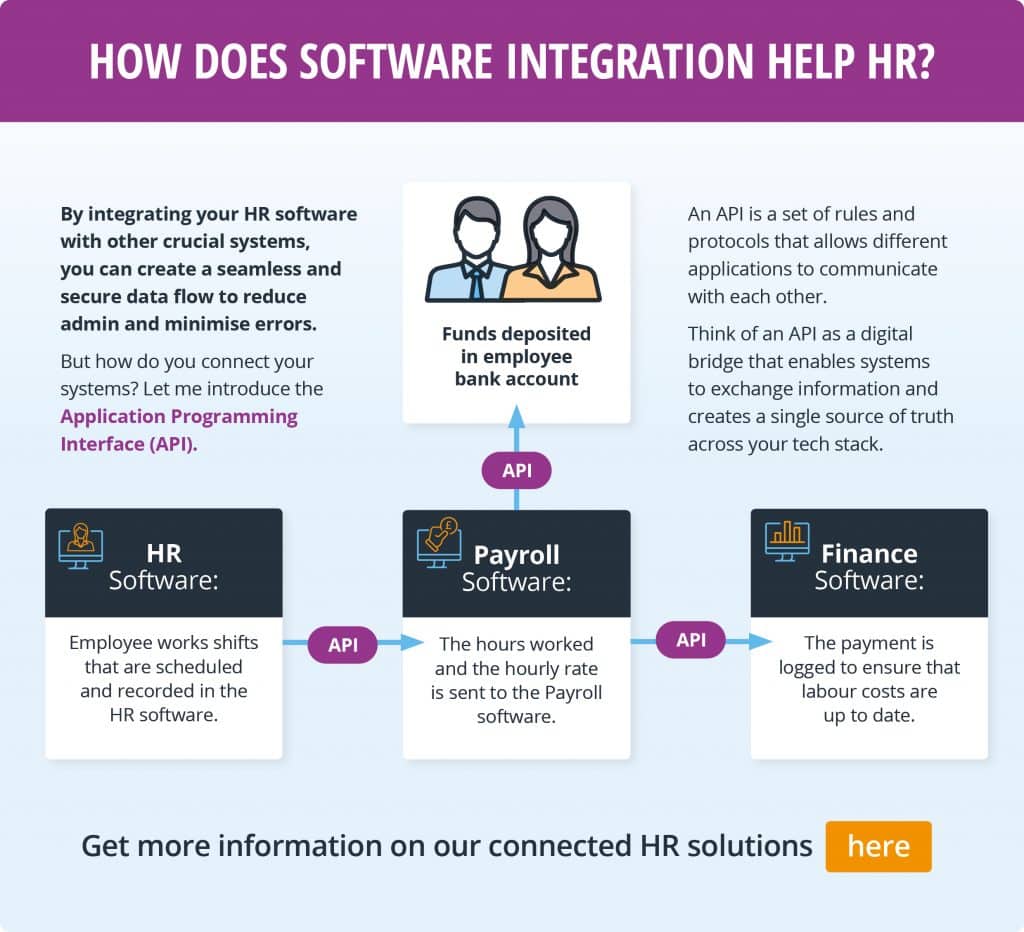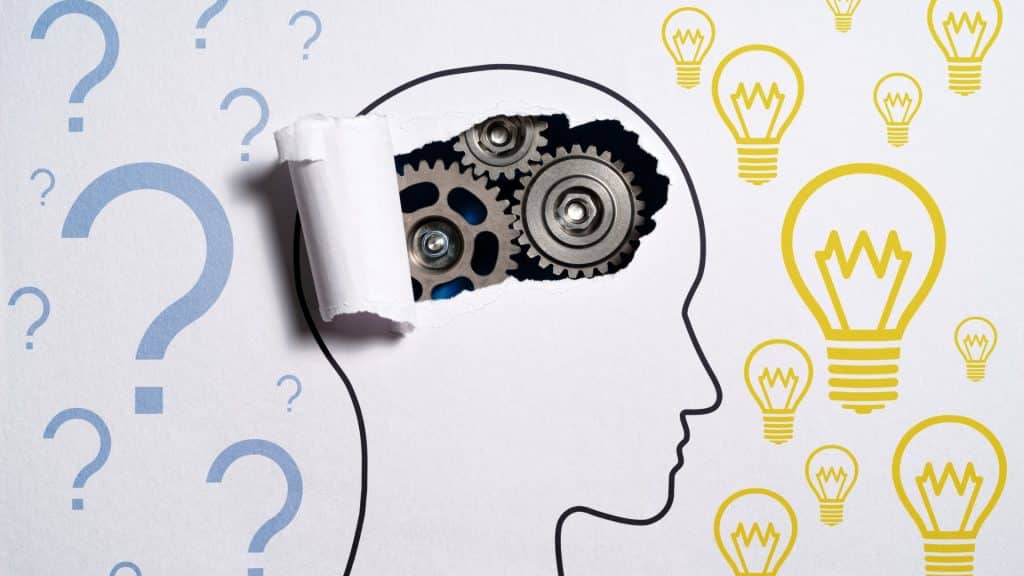The power of HR system integration
Updated 24th April 2025 | 6 min read Published 22nd April 2025

Disconnected systems, endless data entry and constant firefighting have left HR teams overworked, frustrated and stretched too thin.
In just the last few months, multiple articles have surfaced with headline stats such as ‘a third of HR professionals are considering quitting due to burnout’, and ‘more than 40% of HR teams feel overwhelmed’.
Instead of focusing on employees and strategic initiatives, HR professionals are drowning in administrative burdens, leading to mass stress and inefficiencies.
What’s the solution? While there’s no silver bullet to HR stress, there are steps you can take, such as HR system integration, to improve your processes and free up your day-to-day.
What is HR system integration?
Connecting your cloud HR software with other key systems, such as payroll or finance, utilises an Application Programming Interface (API), which is a set of rules and protocols that enables them to all work together and share information.
Think of an API as a digital bridge that enables systems to exchange information and creates a single source of truth across your tech stack.

Minimising human error
One of the most common causes of human error in HR is the use of disconnected systems (or perhaps a complete lack of software!).
Manually handling data and keying in information often results in inaccuracies and errors.
With payroll, for example, inaccurate data entry can lead to wages being incorrectly determined; miscalculations can occur during complex calculations and errors in timesheets can confuse the entire process.
The benefits of an integrated HR system
HR professionals can save massive amounts of time by integrating their key systems.
1) Integrating with finance systems
Integrating your HR software and finance system ensures data consistency.
By synchronising your data, such as labour costs and budgets, you can provide detailed insights into business spending.
HR and finance software integration also:
- Streamlines financial reporting
- Improves budget planning
- Ensures financial decisions are based on accurate workforce data
2) Integrating with payroll systems
Integrating your HR and payroll systems eliminates the need for data duplication and manual intervention.
For example:
- If maternity is registered in the HR software, it becomes maternity pay in payroll
- If an employee submits any expenses with receipts via the HR self-service app, it can flow into the payroll software
- If an employee changes their payment details in the HR system, it is automatically reflected in payroll
3) Integrating with Learning Management Systems (LMS)
Integrating your learning management systems and HR software enables you to easily track training progress, certifications and performance metrics, all in real-time!
This integration helps you ensure training is completed and also enables you to proactively identify skill gaps.
Also, when the business has new hires, the integration ensures they are automatically enrolled into essential training modules.
4) Integrating with recruitment systems (ATS)
Integrating your HR and recruitment systems can streamline the hiring process, centralising candidate profiles and automating data entry into employee records once onboarding begins.
Via the integration, you can also access valuable recruitment metrics, such as time-to-hire and cost-per-hire, helping facilitate data-driven decision-making.
Short-term and long-term strategies to support your HR team
How can HR be expected to effectively support the workforce when they themselves are struggling?
The very nature of HR requires teams to put employees first, but this poses the question: who looks after HR?
We’re here to lend a helping hand!
In our new guide, we’ve compiled some short-term and long-term changes you can make to help reduce burnout, providing tangible actions you can take away and implement today, as well as some food for thought to improve the future.





